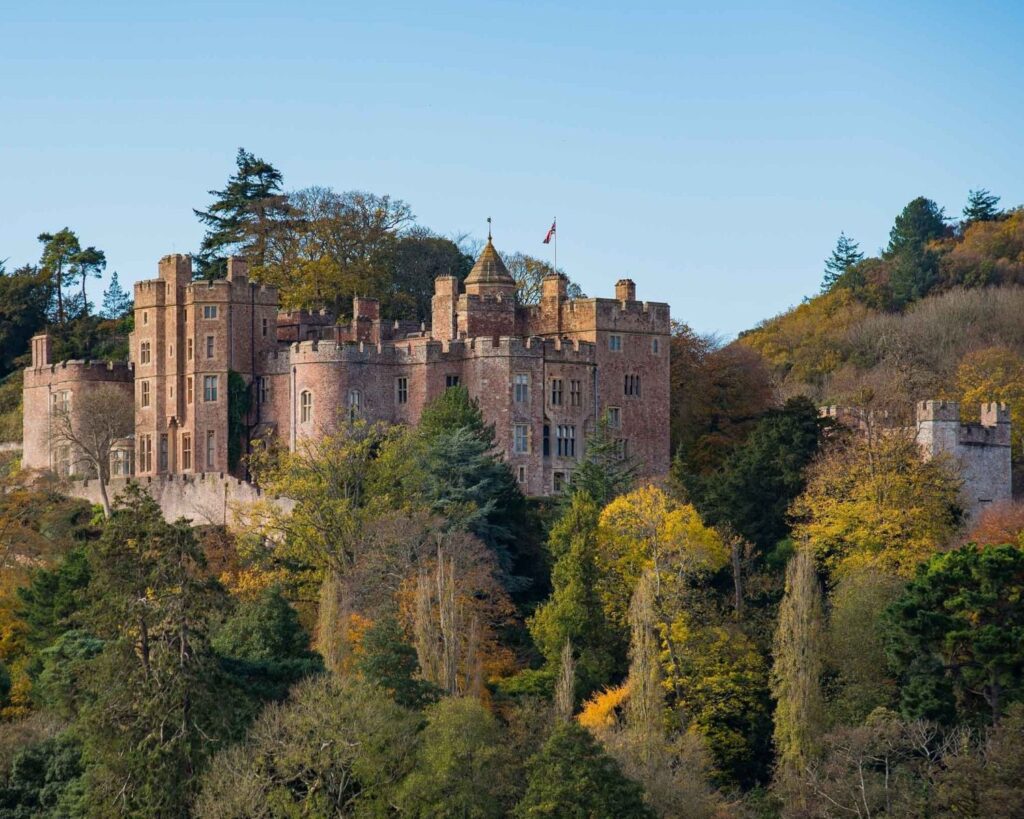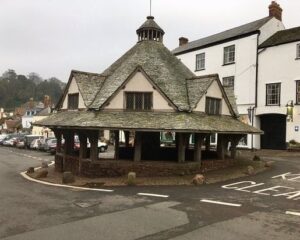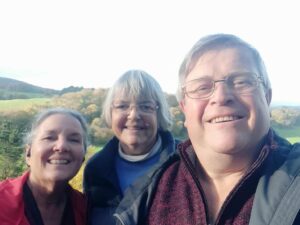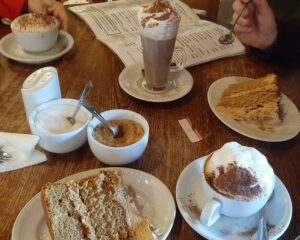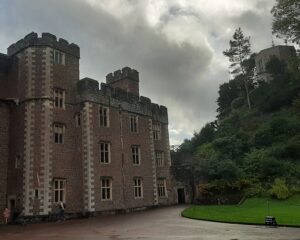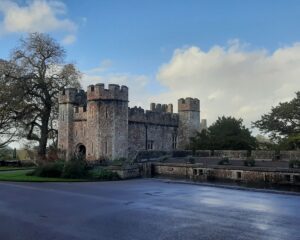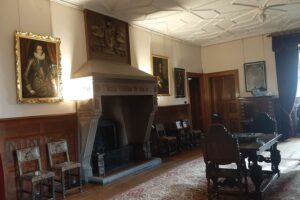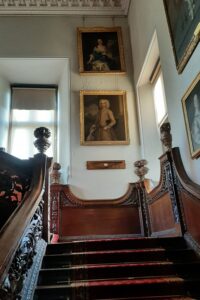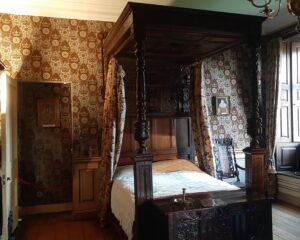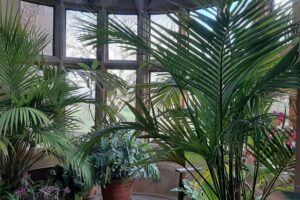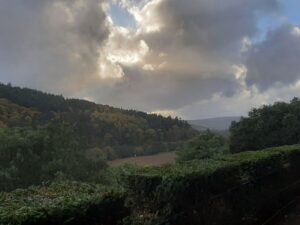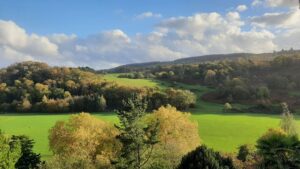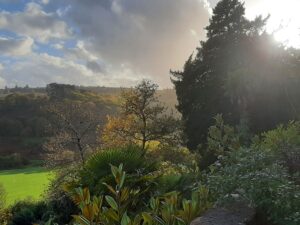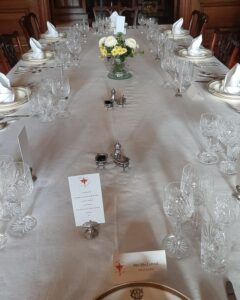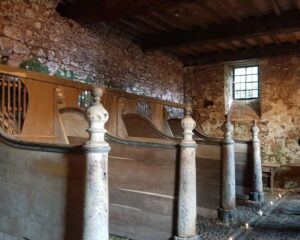Our day trip to Dunster Castle started in Dunster village. Set at the foot of Exmoor, it dates back to Saxon times and is mentioned in the Doomsday Book. It’s one of the prettiest villages in England with its own castle, packhorse bridge, unique octangular Yarn Market and has teashops, hotels, pubs and shops in the village. It is best known as the largest and most intact medieval village in England.
Having this beauty spot on our doorstep it is one of the places we like to take visitors. This is what happened recently. Our friend Sharna was visiting us from her home in Texas. What better way than to show her some of our history.
Dunster Village
The weather that day was, well changeable would be the best description. However undeterred, we set off to Dunster village to have a look around there. Of particular interest in the centre of the village is the 17th Century Yarn Market, a monument to the once thriving cloth trade in the area. This cloth was known locally as `Dunsters’.
Dodging the showers was quite a task but we managed to may our way through a couple of the local shops and then found a coffee house – a break was well earned by then.
Dunster Castle – The Start
To appreciate the Castle – you need to appreciate it’s history, so here is a potted version.
There has been a fortification on the site of Dunster Castle since Saxon times. History then took ownership of the castle through the Norman era and in 1376 it was sold to Elizabeth Luttrell although the ownership wasn’t formally finalised until 1404. The Lutterell family continued to own the property until 1976.
During the early years of the Lutterell era and great deal of re-modelling was done to transform it into a country home for the family. In the early 1400’s the Great Gatehouse was added to the castle entrance as a defence.
The castle was again re-modelled in the late 1500’s turning parts of the castle into a Jacobian-style mansion. With its square towers and decorative plaster ceilings.
English Civil War 1640
This turned out to be one of the most turbulent times in the Castle’s History. The family were Parliamentarians during the reign of King Charles I. In 1642 the garrison, under the leadership of Jane Luttrell resisted an attack by the Royalists but eventually surrendered and `switched sides’ in 1643.
In May 1645 Prince Charles (Later King Charles II) stayed at the castle and it is believed that a secret passage enabled him to leave without being captured. The same year the castle was again seized under the command of Parliamentarian Colonel Robert Blake**. Again the family surrendered and at the end of the Second Civil War in 1649 much of the defensive ramparts were demolished.
** As an aside, Colonel Robert Blake, or Bobby Blake as he is known locally, was born in our home town of Bridgwater. His life is quite extraordinary in itself and well worth reading about. A Colonel but later Admiral and General at Sea and became known as the “Father of the Navy”. There is a statue in his honour in the centre of Bridgwater and his former home is now the Bridgwater Museum.
Dunster Castle – Modernised
Continued generations of the Luttrell family modernised and extended the Castle. In 1816 the then owner John Luttrell opened the Castle to the public for the first time. His successor George Luttrell started the most extensive modernisation projects from 1867. These included the installation of an underground reservoir to supply both the Castle and the village. Other improvements included a conservatory, heating, a billiard room, drawing room and library.
Other members of the family continued the improvements and it was also used during WWII to accommodate injured soldiers, American and Naval officers.
Ownership within and outside the family took place several times. Walter Luttrell was the last family member to own the property but he lived elsewhere and gave the property away in 1976.
Current Ownership
Owned by the National Trust since that time, it is regarded as one of the most famous visitor destinations in England. We certainly enjoyed our time here and even had time between showers to explore a small area of the gardens. This is something to be re-visited if only just for the views which change throughout the seasons.
The Castle is a magnificent blend of different architectures. The extensive gardens would be wonderful to explore in fine weather, there is also a shop and tea rooms.
And Finally …
The guides within the Castle are friendly and knowledgeable. They are very happy to explain more about the rooms than can be gleaned from a guidebook. There is lots to do on a day visit to Dunster Castle and the village. Look out for advertisements about special events taking place there throughout the year.
Also check for opening times which vary through the seasons but all the information is on their website.
Did we enjoy our visit? Yes we did, it was lovely to stroll through the building again and our friend Sharna thoroughly enjoyed the visit too.

